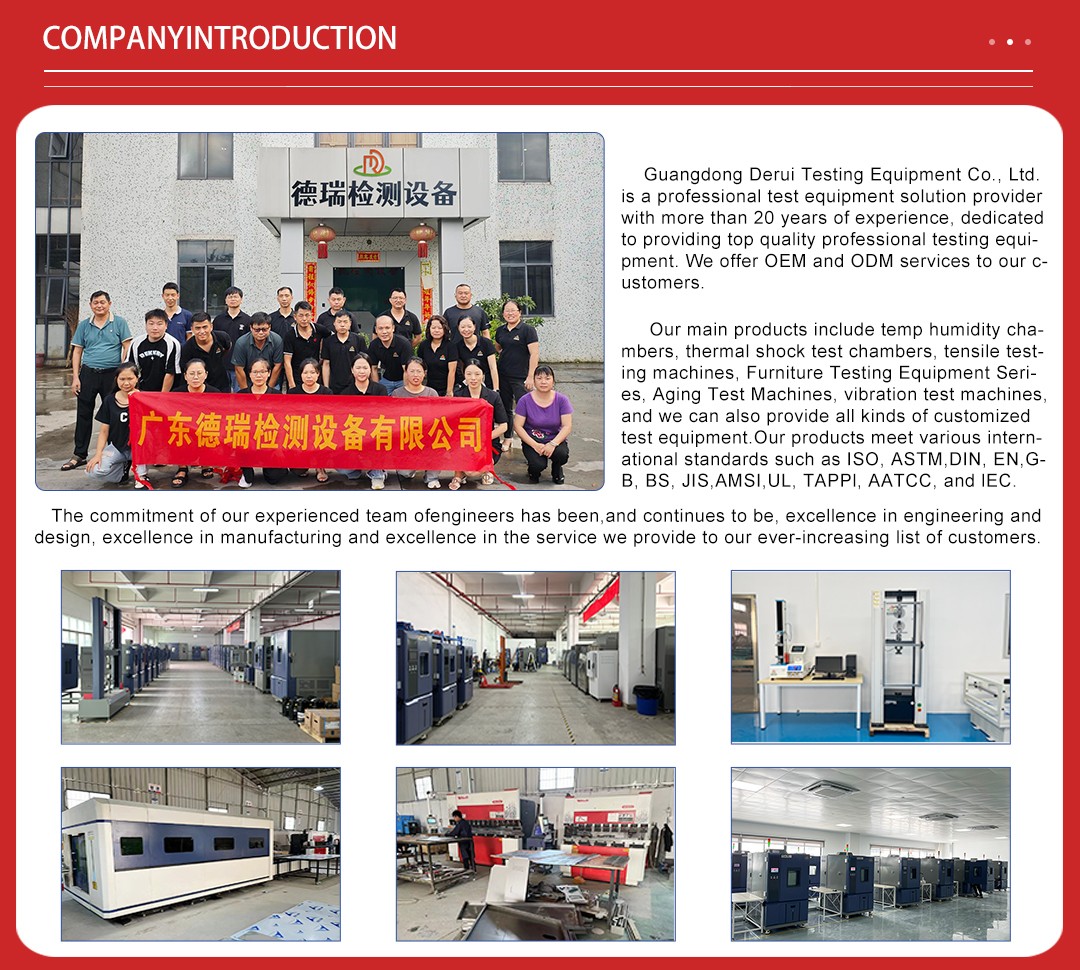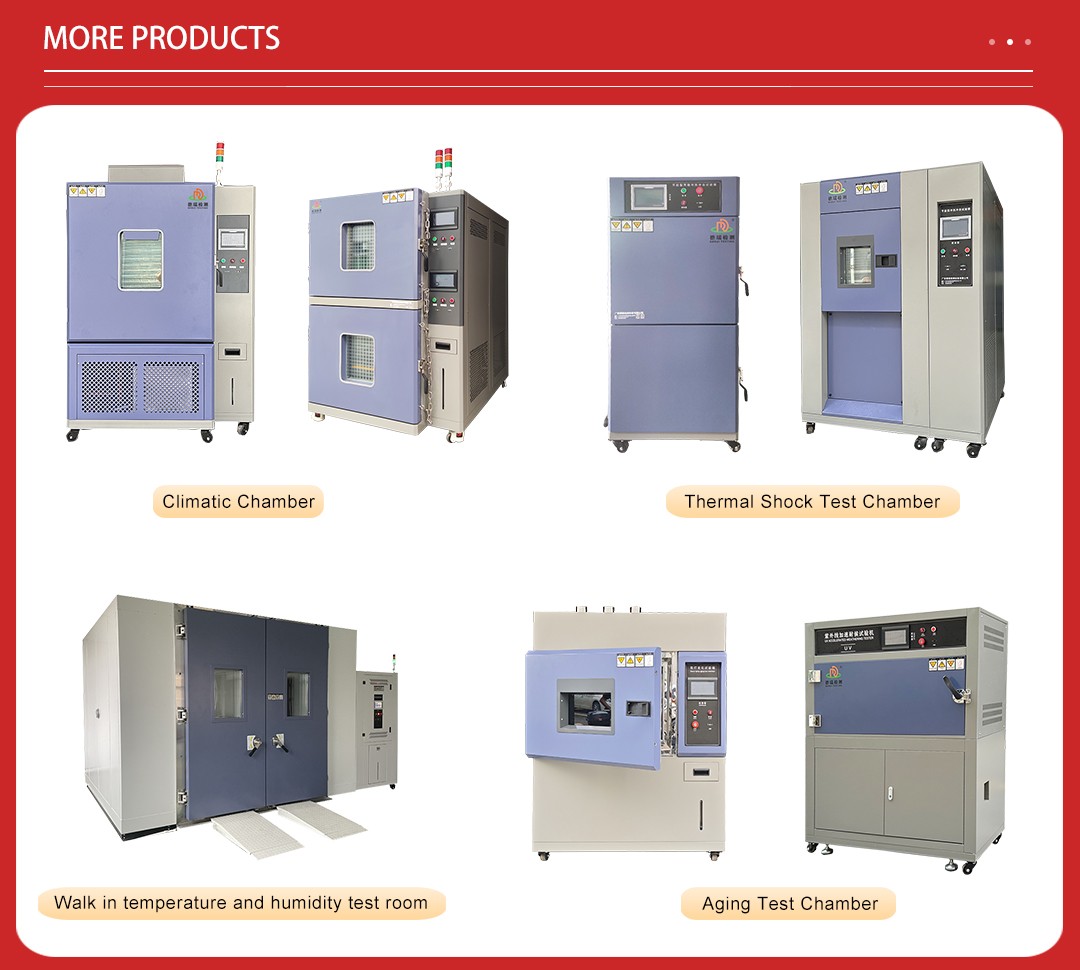
The Precision Temperature Cycling Test Chamber is a sophisticated environmental testing device specifically designed for the electronics industry. It simulates rapid and precise temperature changes to ...

The Precision Temperature Cycling Test Chamber is a sophisticated environmental testing device specifically designed for the electronics industry. It simulates rapid and precise temperature changes to evaluate the thermal endurance, reliability, and performance of electronic components, assemblies, and finished products. This chamber is essential for identifying potential weaknesses in materials and designs, ensuring that electronic devices can withstand the thermal stresses they may encounter during real-world use. By subjecting products to controlled and repeatable temperature cycles, manufacturers can improve product quality, extend lifespan, and meet stringent industry standards.

The primary role of the Precision Temperature Cycling Test Chamber is to assess the thermal stability and reliability of electronic components and systems. By exposing these items to rapid and extreme temperature changes, the chamber helps identify potential issues such as:
- Compliance with Standards: The chamber ensures that products meet or exceed industry standards for thermal endurance, helping manufacturers avoid costly recalls and ensure customer satisfaction.

1. Ultra-Precise Temperature Control: The chamber offers unparalleled accuracy in temperature regulation, with minimal overshoot or undershoot, ensuring that test conditions are consistent and reliable.
7. Compact Design: Despite its advanced capabilities, the chamber is designed to be space-efficient, making it suitable for both laboratory and production environments.

Model | DR-H201-100 | DR-H201-150 | DR-H201-225 | DR-H201-408 | DR-H201-1000 | |
Internal Dimension (W*H*D) | 500*500*400mm | 500*500*600mm | 600*750*500mm | 600*850*800mm | 1000*1000*1000mm | |
External Dimension (paint Type) (W*H*D) | 750*1536*1310mm | 750*1636*1410mm | 850*1786*1410mm | 850*1890*1710mm | 1250*2066*1910mm | |
Temperature(℃) | -20/-40/-70 | -20/-40/-70 | -20/-40/-70 | -20/-40/-70 | -20/-40/-70 | |
Total Power(kw) | 4.5/4.5/6.5 | 5/5/6.5 | 9.5/9.5/11.6 | 9.5/9.5/11.6 | 17/17/21.5 | |
Maximum Current(A) | 25/25/32 | 32/32/40 | 25/32/40 | 25/32/40 | 50/50/60 | |
Voltage(A) | Sigle Phase 220V | Sigle Phase 220V | Three Phase 380V | Three Phase 380V | Three Phase 380V | |
Performane | Temp.& Humi. Adjust Way | Balanced temperature and humidity control (BTHC) PID intelligent adjustment | ||||
Temperature range | -20℃,-40℃,-70℃~150℃ | |||||
Temperature accuracy | 0.01℃ | |||||
Temperature tolerance | ≤±1.0℃ or ±2.0℃ | |||||
Temperature fluctuations | ≤±0.5℃ (without load and temperature stable) | |||||
Temperature uniformity | ≤1.5℃ (without loading), 50mm≤SENSOR | |||||
Humidity range | 20%-98%RH | |||||
Humidity accuracy | 0.1%RH | |||||
Humidity tolerance | 1 、≥75%RH:≤±3%RH ;2 、≤75%RH :≤±6%RH | |||||
Humidity fluctuations | ≤±2.5%RH | |||||
Heating rate | 3℃/min in average | |||||
Cooling rate | 1℃/min in average | |||||
Internal Chamber Material | Stainless Steel 304 | |||||
External Chamber Material | Stainless Steel steel of paint spray | |||||
| Cooling Method | Single stage compression, two stage compression | ||||
Refrigerator | Hermertically Sealed France Tecumseh Compressor or Semi-hermetic BOCK Compressor | |||||
Cooling Method | Air-cooled | |||||
| Operation Panel | Programmable LCD Touch Screen | ||||
Running Mode | Fix Running, Pattern Running | |||||
Program Memory Capacity | 120 Group Programmable, Max 100 Section Each | |||||
Output | Rs-232 (USB,Optional) | |||||
| Water Supply | Circulating Water | ||||
Water Tank Capacity | Chamber Internal Capacity < 800L: 25L X 1pc | |||||

5. Data Collection: Throughout the test, sensors continuously monitor the temperature and other relevant parameters, with data being logged for later analysis.
5. Corrosion Resistance Testing: Evaluating the ability of electronic components to resist corrosion in environments with corrosive gases or moisture.
5. Post-Test Analysis: After the test is complete, remove the samples and analyze the data to identify any failures or performance issues. Use this information to make informed decisions about design improvements or material selection.
Safety Protection Measures
5. Temperature Gradient Control: The chamber uses advanced algorithms to control the rate of temperature change, minimizing thermal shock and protecting sensitive components.
In summary, the Precision Temperature Cycling Test Chamber is an indispensable tool for the electronics industry, providing a comprehensive and reliable method for evaluating the thermal endurance and reliability of electronic components and systems. Its advanced features, safety protocols, and precise control make it an essential asset for manufacturers seeking to deliver high-quality, durable products that meet or exceed industry standards. By simulating real-world thermal conditions, this chamber helps ensure that electronic devices can perform reliably in even the most challenging environments.


Not search wanted products